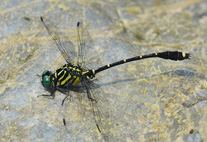Abstract
Three new species of Loimia were collected along the Brazilian coast, during some independent projects, from shallow to deep waters off the continental slope. These species are L. megaoculata sp. nov., L. armata sp. nov., and L. brasiliensis sp. nov., all herein described and compared with the morphologically most similar congeners. Loimia megaoculata sp. nov., is characterized by having large, dark eyespots, progressively smaller from dorso-laterally towards lateral basal part of prostomium; lobes of segment 1 are distally rounded, roughly circular, barely reaching mid-length of upper lip; uncini have up to 6–7 teeth, including basal-most tooth. Loimia armata sp. nov., lacks eyespots; stout lobes of segment 1 nearly reach level of upper lip; uncini have up to 7–8 teeth, including basal-most tooth. Loimia brasiliensis sp. nov., has two narrow rows of eyespots; lobes of segment 1 are thin, reaching mid-length of upper lip; uncini have 5–6 teeth, including basal-most tooth. We provide a brief discussion on the main morphological characters useful for the taxonomy of this genus, such as presence of eyespots, and morphology of lobes of segments 1 and 3, of mid-ventral pads and neurochaetae. Up to now only two species had been recorded from Brazil, namely L. grubei and L. medusa, both doubtful records, as discussed along this paper.

